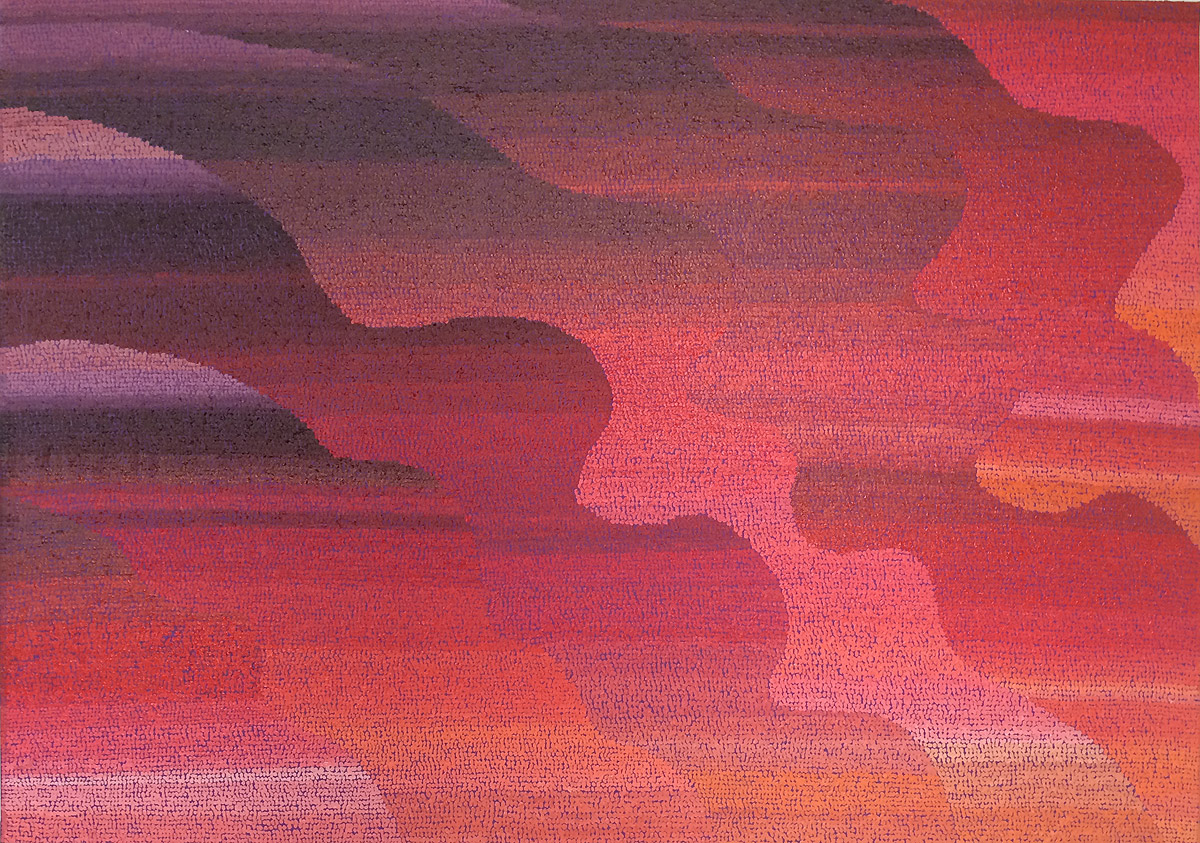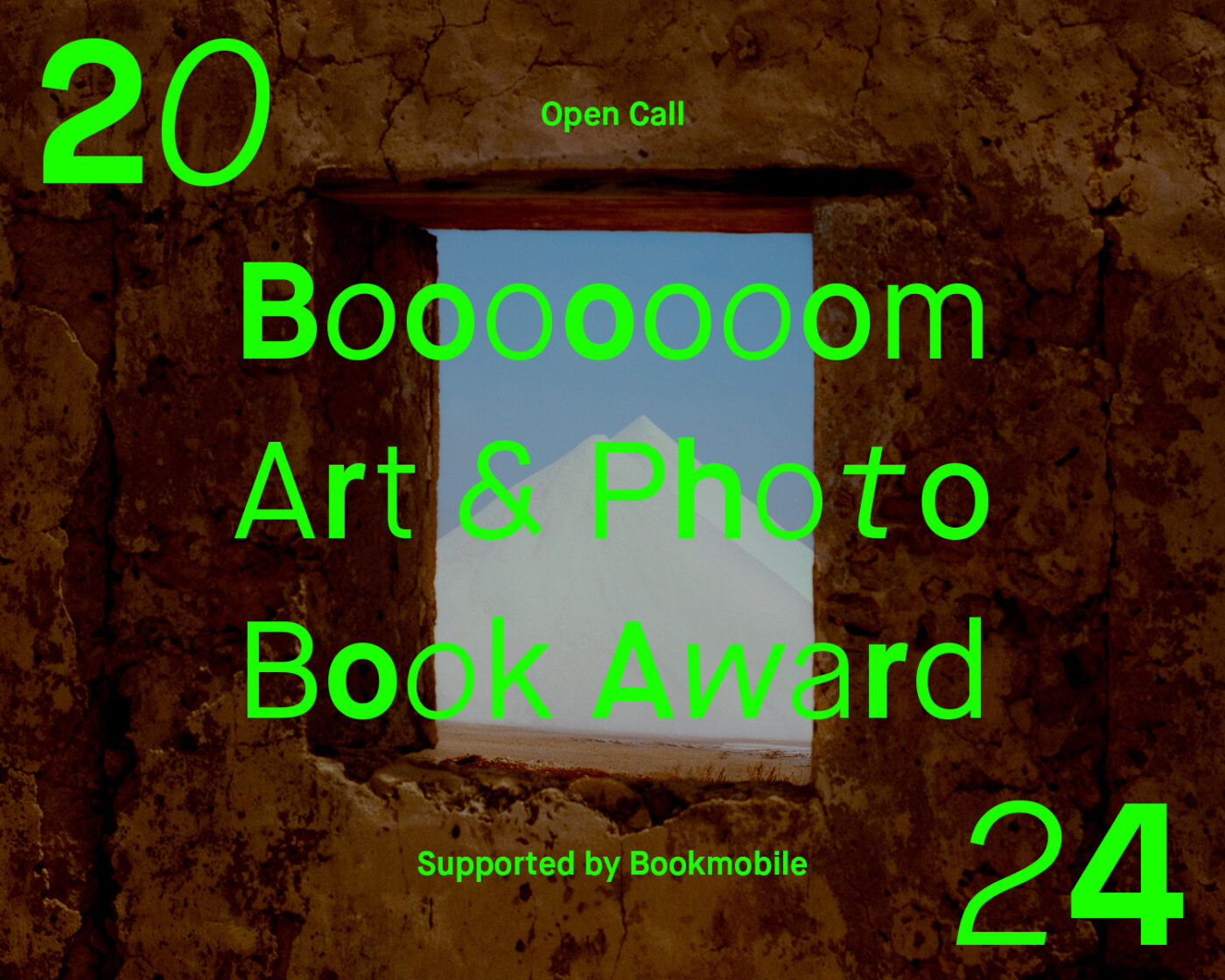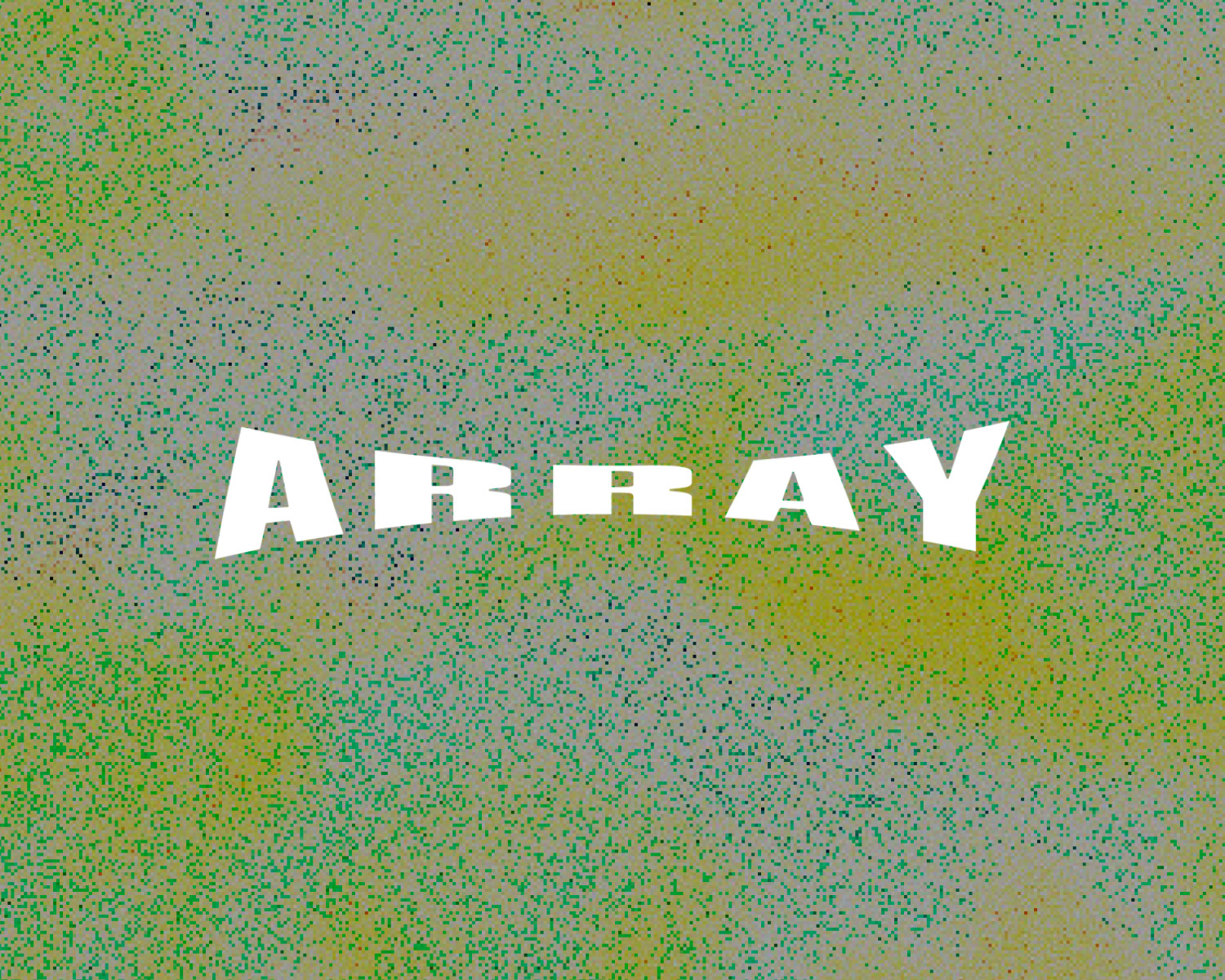It’s impossible to look at these recent paintings by Los Angeles-based artist Jean Nagai and not feel a little more optimistic about the world. His work celebrates the connectedness of everything, and I was excited to find out a little bit more about the artist creating such beautifully naive work.
Jeff Hamada: So who is Jean Nagai? What’s the most important thing I should know about you?
Jean Nagai: I am a first generation Japanese American artist. I’ve visited many facets of this planet that have helped me see that every race and culture I’ve come across is unique and beautiful, and we’re also very similar to each other. Life is short and at times tough, so I’m trying to make it a little easier for the ones who are suffering. I love animals—I really think we need to stop consuming them at such as massive level, and I believe in science. I’ve also seen supernatural beings that cannot be explained by science.
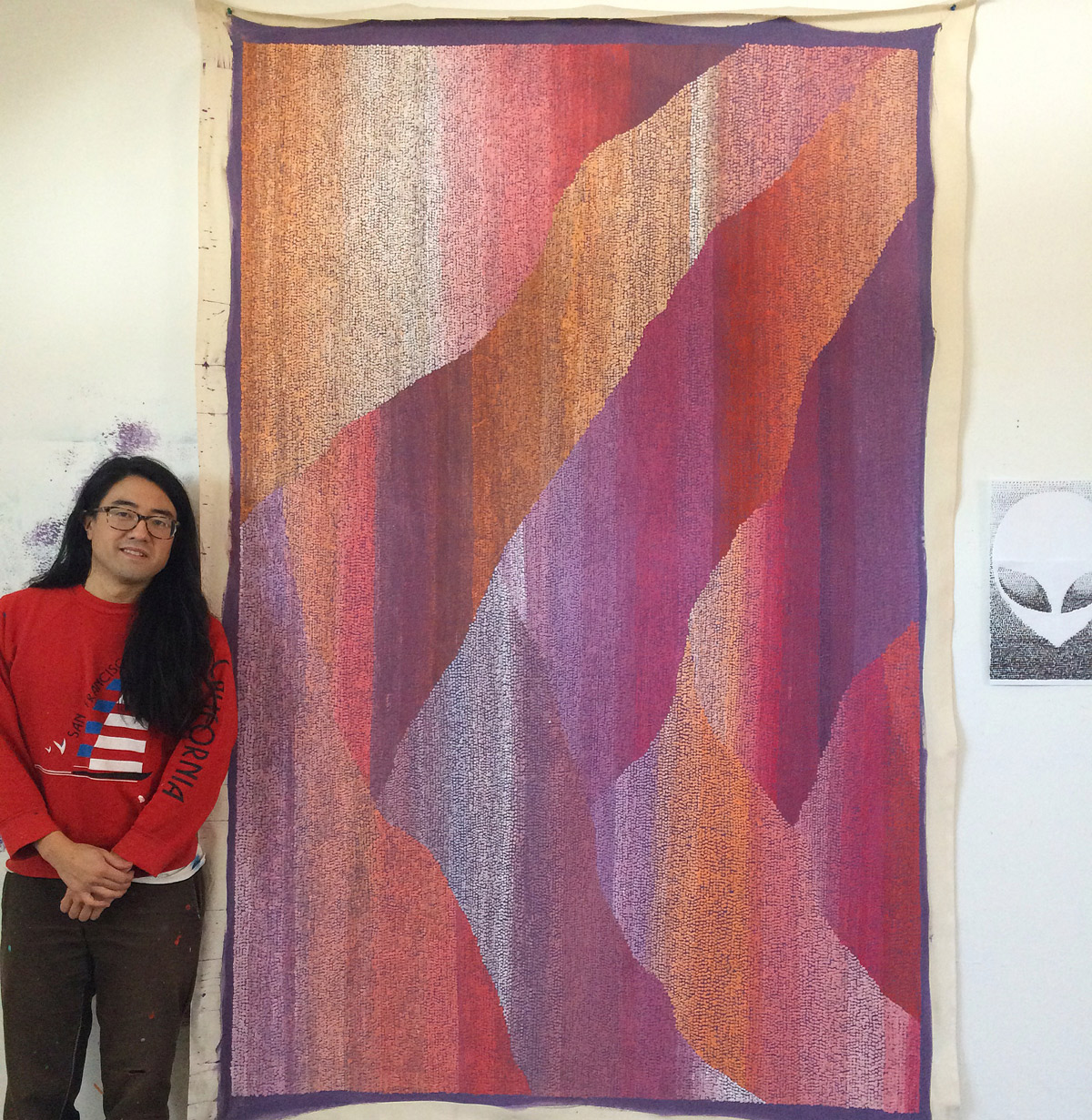
Jeff Hamada: I actually feel like I’m talking to a supernatural being right now. Can you paint a picture of what life is like in Olympia, Washington? Set the scene.
Jean Nagai: On a good day the air smells like a combination of a crisp salty breeze and warm pine sap. The co-op has delicious produce in the discount bin, and my beautiful friends are all getting along. There are 50 or so dogs happily running around the park, Mount Rainier is turning pink from the sunset, and my secretly rich white hippy neighbor brings over some figs, and then complains about the growing downtown homeless population. Later the libertarian neighbor shows me his most recent WWII gun acquisition and then complains about the growing hippy population. I recently moved to LA, which is the opposite of Olympia in many ways, and I miss living there but there is so much more to the world than Olympia.
Jeff Hamada: At what point did you start to take art-making seriously?
Jean Nagai: Probably after I realized that I shouldn’t pursue music anymore. I’ve always wanted to be an artist but I was distracted by sex, drugs and rock n roll before I took art seriously—this was about 12 years ago. I was feeling very raw and alive; music with my close friends seemed like the best outlet. It was an intense time of exploration, love, and pain for 7 years. We eventually drifted towards other interests and mine was art—specifically drawing—so over the years I spent more and more time on it. Eventually the drawings became embroidery, then installations, and then the drawings became more elaborate, and then became paintings, and now I’m here.
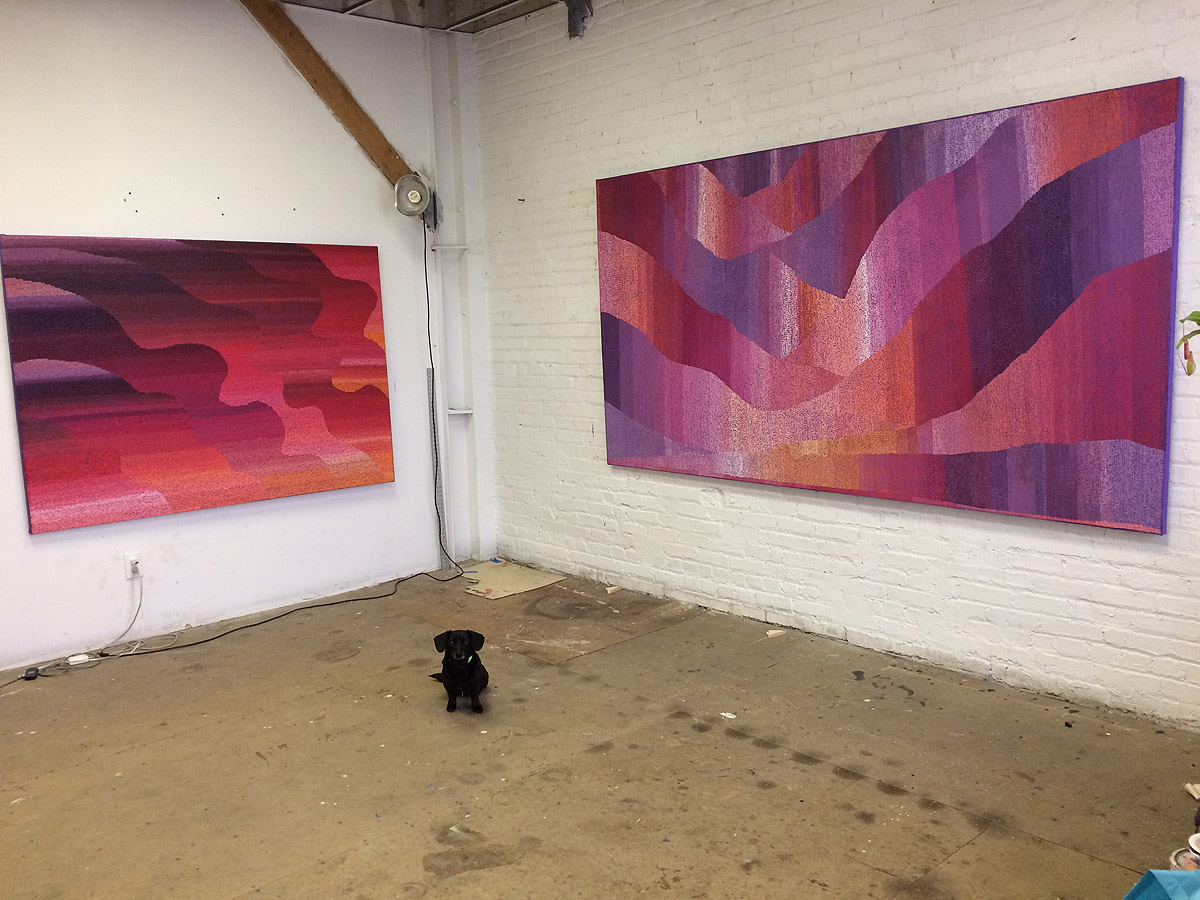
Jeff Hamada: When did you feel like you had found your voice?
Jean Nagai: I think it my first year working up in Alaska, this was the summer of 2002. My “job” was to talk to and feed tourists on a boat while we went down a massive fjord that had thousands of waterfalls and was filled with humpbacks, porpoise and seals. The end of the fjord had a monumental glacier, and the face was a half mile long, and we’d watch twin tower sized chunks of electric blue ice slowly crash into the water. One time the entire face of the glacier fell off at once! I’ll never forget the sound and image of that level of destruction. That’s when I started thinking about scale; our relationship to earth, how awesome it is that everyone and every animal is doing something, and yet how complacent we are in pollution, war, and famine.
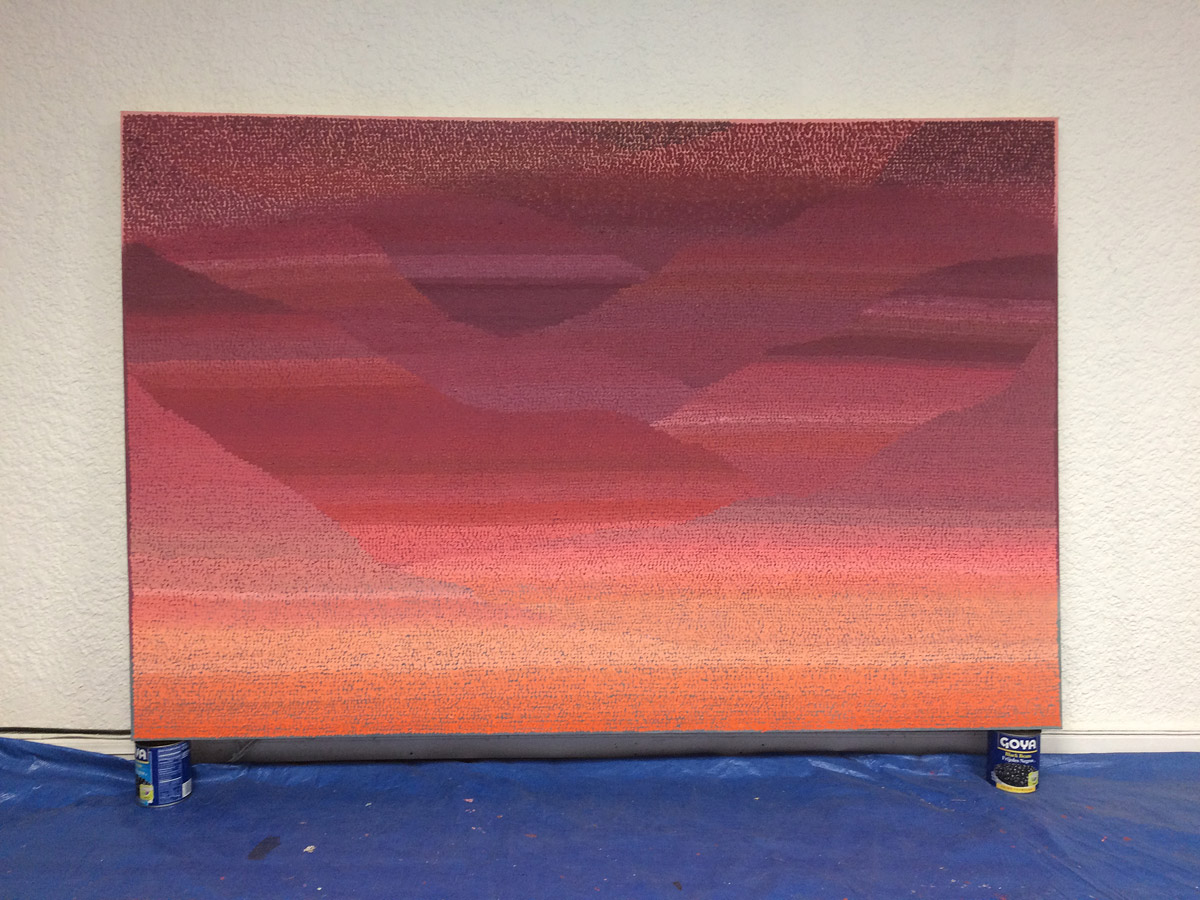
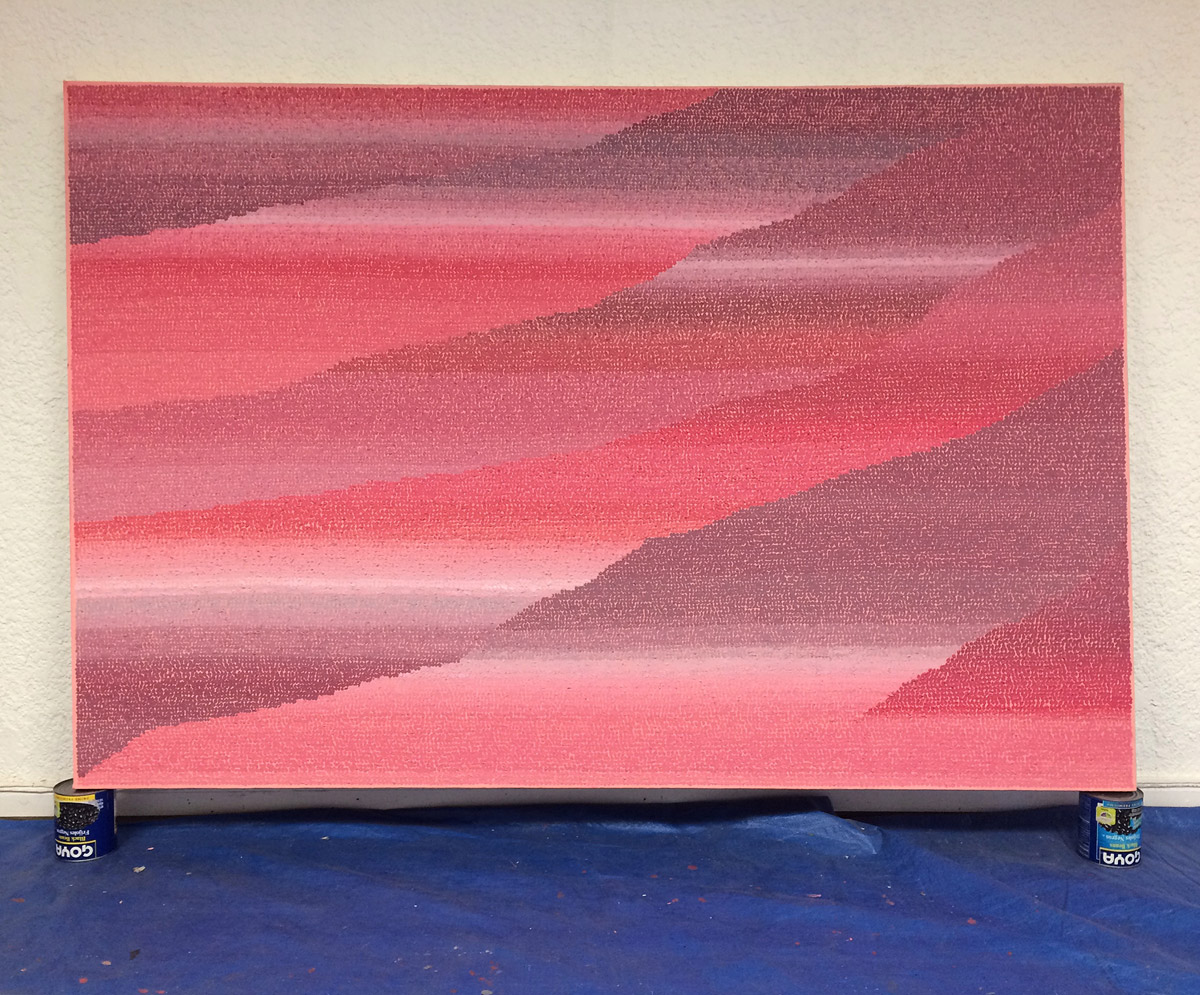
Jeff Hamada: The first time I visited Tokyo and took a train, I looked out the window and it kinda looked like one of your paintings. Thousands of dots—all people— flying past, street after street. It was a very emotional experience. I don’t think I’ve ever felt so small and insignificant. Have you had an experience like that?
Jean Nagai: Feel small and insignificant? All the time, when I look at the Milky Way, or stare at the horizon and get caught up in the rhythm of the ocean. It humbles me to know that all that stuff will still be there after I die. I think Hiroshi Sugimoto said something about his reason for taking pictures of the ocean is because it looked the same as it did to indigenous people many thousands of years ago and that is beautiful thought. I grew up next a cemetery and I used to walk through it to go to school. I had to walk through it alone at night after they closed, and I was always terrified. But at some point after doing this for years and never seeing any of the thousands of bodies ever arise, it helped me realize that the bodies had decomposed and that was a some kind of relief.
Jeff Hamada: Did you ever see the Northern Lights in Washington?
Jean Nagai: It wasn’t like the classic green and red curtains we see in pictures, but I did see something that looked like sun rays at night. At first I thought it was some reflection but it was just too massive to be human made. I never saw it even all the years of working up in Alaska.
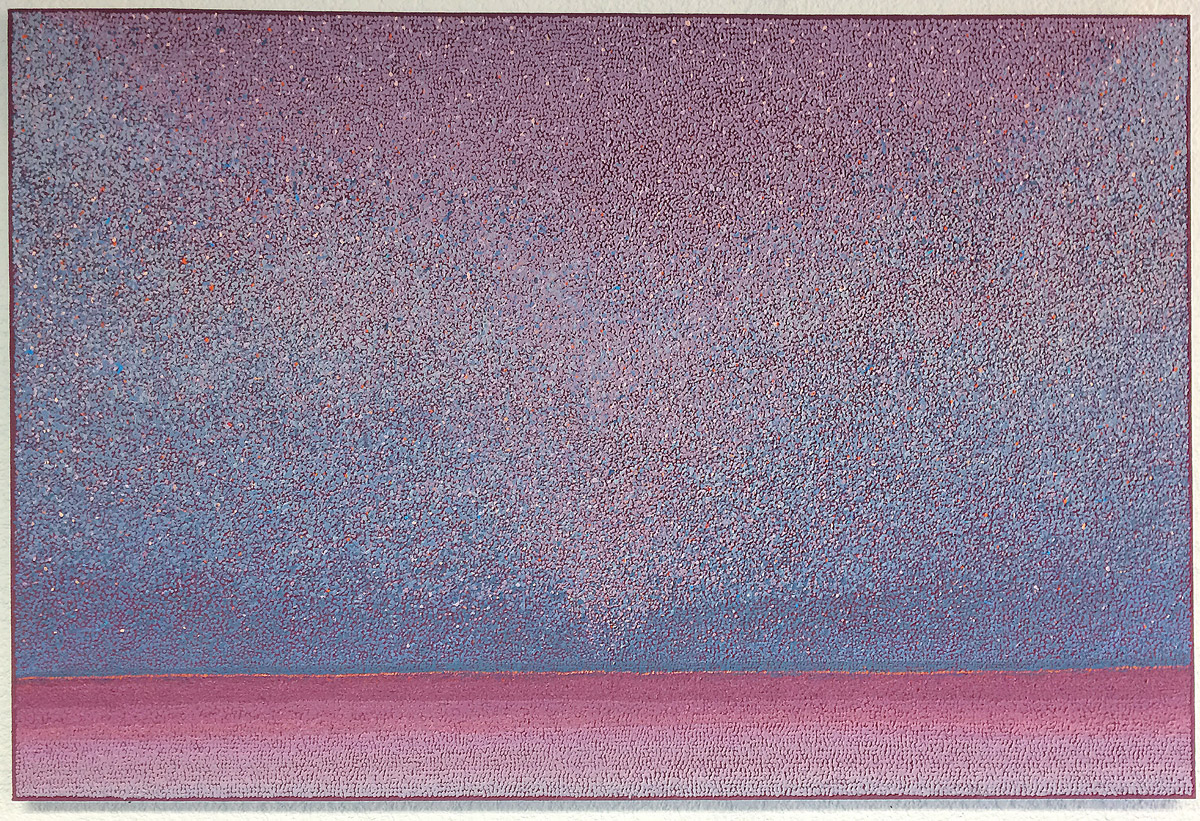
Jeff Hamada: Your works feel like mirages, like elusive natural occurances. Can you talk a little bit about memory and how subconscious imagery emerges in your work.
Jean Nagai: I love to go inside a forest, or a sit by a river and listen to the water flowing, and the birds chirping(it’s one of my favorite sounds). Then I feel a connection with my surrounding, my relation to the planet, and I think about my life and death, my parents, the mistakes I’ve made, and how I can change my patterns to empathize—to be aware, to be more open to love. This contemplative time I spend within nature is the feeling I want to paint. I try to honor that by painting in a way that has to do with a slower pace, where there is room to breathe and feel, uninhibited by physical reality. I have a spectrum of memories, and some are horrible and some are lovely but I think its essential to put out love in this world.
Jeff Hamada: I posted your work five years ago and your process looks very similar but something about the work now feels more honest to me. How do you think your work has changed in the last few years?
Jean Nagai: I have been part of toxic masculine culture most of my life and because of my participation in this, I have not been aware of my emotions or the negative and aggressive energy that I carry around me. I’m learning to free myself from it with empathy and love, and also by making work through a slow mediative process. I learn to breathe and look at things more closely, and also see the broader picture of how everything is related to each other. It’s healing to work this way, to be aware of my actions, to accept pain, loss and sadness, and process that into emotional strength.
Lately I’ve been using colors that are warm or delicate because it helps me soften this shell of aggression I’ve built up over the years. These are the colors I saw in the landscape and sky of southern New Mexico when I lived there last year. My palette in Olympia was mainly dark blue and white, it was more based on being graphic, sometimes cold and rigid. I used correctional fluid or White Out as a way of addressing white privilege in that work.

Jeff Hamada: Do you listen to music while you work? I almost wouldn’t be surprised if you said you worked in complete silence.
Jean Nagai: All types of sounds, jazz to silence. These days I’m not in pop music, or anything too harsh. I don’t seek out new music so if anyone has something they enjoy please share with me.
Jeff Hamada: Who are some other artists whose work you are really enjoying these days?
Jean Nagai: Arthur Jafa’s video “Love Is the Message, The Message is Death” floored me, I wept many times afterwards thinking about it. I think it should be shown in every classroom in the south, or even projected onto the White House. Georgia O’Keefe is one of the best painters ever, so is James Turrell. Cornelia Parker and Theaster Gates are sculptural poets, Yoko Ono forever.
Call to Submit: Art & Photo Book Award
If you have a specific series or a cohesive selection of work that you want to turn into a book, we want to see it!
Learn moreCall to Submit: “Array” Photo & Art Features
Submit single images to be featured alongside the work of other artists and photographers as a group feature.
Learn moreRelated Articles
